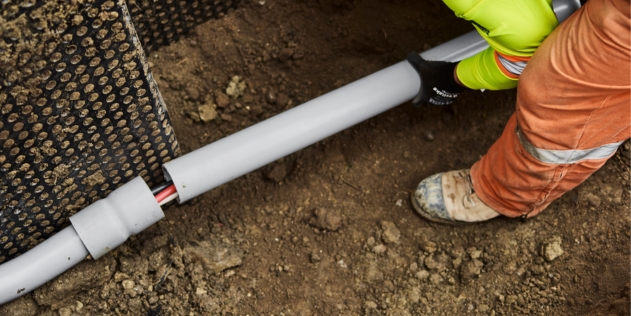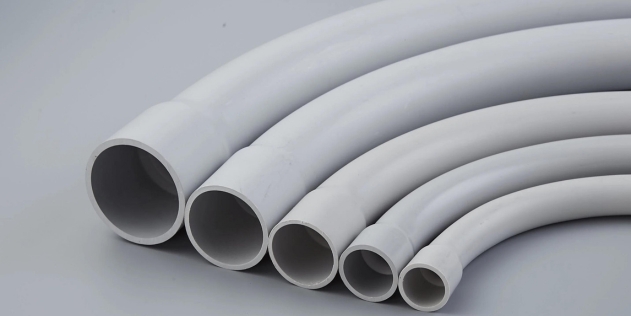How to Find the Ideal PVC Conduit Fittings
Rigid and corrugated PVC conduit are the two most common types used in Australia. The material has been extensively used since the 1950s and serves to shield wiring and cables inside from the negative impact of adverse weather, exposure to heat, as well as corrosion or electrical leakage. While similar to the PVC piping you’d find in most homes, PVC conduit has thinner walls, differs in colour, and isn’t interchangeable.

There are also differences between the two types of conduit in terms of usage. Rigid conduit is often sourced in larger diameters and is used outdoors or underground. Individual pieces are connected using rigid PVC fittings. Flexible conduit, other hand is used indoors or above ground, is UV resistant, and as the name implies, can bend and flex as needed.
Fittings Used with Rigid Conduit
Connecting separate pieces of rigid conduit, in the same or different diameters, is done with the right fittings. These are also used to connect rigid and corrugated conduits where the need arises. Since both types have been around for quite a while, manufacturers have come up with all that’s possibly needed in just about any cable and wiring routing project. For instance, you’ll find plain to flexible couplings where rigid conduits end, and attach to flexible variants, converting adapters where older wiring is set in conduit sourced in imperial sizes to fit metric systems, plain or threaded reducers to connect conduits of the same size, a range of junction boxes for splitting the wiring run in the desired direction, and of course things like elbows and sweep bends when space gets tight and when wiring direction takes an abrupt turn.
What is a Sweep Bend?
Where routing calls for gradual bends, say when there needs to be a smoother transition in the direction of the cable run, and when sharp angles can cause unwanted stress in cables, sweep bends are used. These are curved pieces of PVC conduit and are designed with a more subtle curve than the standard PVC bend or elbow. They are used to prevent potential damage in cables, create neater routing, and an electrical system with improved overall performance. Buyers can find these in varying types, from heavy-duty orange PVC conduit sweep bends used underground to white bends used indoors and in communications lines. The different colours make work simpler (as per required AS/NZS 2053 standards) and help identify the type of wiring inside.

Buying Bends – What to Consider
There are standard 90-degree bends and large 45 and 90-degree sweep bends. Large or long sweeps and elbows have a radius over three times the internal diameter of the tubing. For instance, a 90-degree long sweep bend with an internal diameter of 25mm, will have an overall length of 192mm and
150mm inner radius (or 6 times the diameter). By comparison, standard bends are short radius (and sharper) in that they have an angle that is 3 times or less of the inner diameter. The gradual curvature in long sweep bends is required when connecting two pieces of straight conduit tubing in different positions and directions with the least amount of fuss.
When buying bends, then, you’ll want to know the inner diameter, the overall length, the angle, the radius (stated in millimetres), and for long sweeps, the overall height between tips. The “size” of bends and elbows usually refers to the inner diameter. This can range from 16 to 63mm in standard short-radius bends, and 20 to 150mm in 45 and 90-degree long sweeps.
Lastly, look for bends that comply with current standards, are free of toxic substances, and are colour coded for the intended purpose.
Compared to Elbows
Elbows are standardised conduit fittings and much smaller in size and radius than both standard and long sweep bends. They’re used in corners and have a 90-degree angle. You’ll find inspection elbows in varying diameters and handy for wiring and rewiring purposes. These are fitted with removable inspection covers. There are also solid elbows, ranging in diameters from 16 to 80mm for cable wiring, and coloured orange, and white solid elbows used in communications and diameters of up to 25mm. Both types are usually used with plain couplings, but you’ll also find threaded variants combined with lock nuts.
What are the Other Fittings on Offer?
To make cable routing easier, not only will you be using the right cable, but also the right fittings for the project. Besides bends and elbows, separate conduits can be joined by connectors, couplings, nipples, reducers, and adaptors, with or without the use of lock nuts and rings. Tees and junction boxes are used in splicing, while end caps and conduit plugs are used in terminating runs and protection from external factors such as heat and moisture. These too are sold in varying sizes and diameters and are colour coded. When sourcing conduit and fittings, go with brands that have a complete range of products and sizes on offer for both cable and communications routing.



